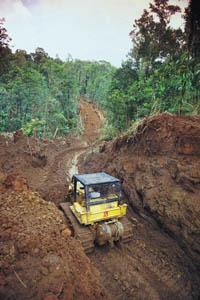The Amazon, oh Amazon!

The Amazon is the most unique ecosystem on Earth. It has been formed in the last 12,000 years around the Amazon. The waters of this gigantic river set the pace for the surrounding ecosystem. From its origin in the Andes to its mouth on the Brazilian coast, the Amazon River has a journey of 6,868 kilometers between New York and Berlin. The Amazon basin, with 600 million hectares, crosses Brazil, Peru, Bolivia, Ecuador, Suriname, French Guiana, Guyana, Venezuela and Colombia. More than half of the 600 million mentioned, about 350, are found in Brazil and 80% are forests. The great rainforest of the world also suffers the greatest accidents: fires, uncontrolled cuts, construction of gigantic infrastructure, agricultural and livestock extension, mines, oil searches, etc. For all this, the Amazon rainforest is one third of the forests threatened on Earth by human action.
The Brazilian Amazon, the richest ecosystem on Earth
Despite the black manifestations that have occurred so far, fortunately in the Amazon greenery predominates. Two-thirds of the Brazilian Amazon rainforest remains; it extends to 7% of the planet's surface, where half of the world's biodiversity is found, where 70% of the Earth's plant and animal species are found. In
terms of wealth, it can be said that the largest number of plants in the world are concentrated in the Amazon. We have already identified 30,000 species that every day find some new. Many of them are not yet known, but many are believed to influence medicine. In the Brazilian Amazon there are a third of the world's trees.
As for mammals, of the 483 species that live in Brazil, 324 live in the Amazon — 67%. There are 30 species of monkeys, about 1,000 species of birds, numerous species of frog, 30 of prawns, 30 of crab… As for river fish, more than 1,500 species are known, and experts believe that there are can exceed 3,000, that is, 15 times more than those existing in all European rivers. In the Amazon you can also find river dolphins, crocodiles, dordokas and giant otters. In one
hectare of Brazilian Amazon rainforest, 50 species of trees can be grouped, each of which can house 80 types of plants, including bromeliads and orchids.
20 million people live in the Brazilian Amazon. Some of them are still unrelated to the developed society and therefore do not know the risks that developed societies may have for the civilizations of each moment. The indigenous population of Brazil is made up of 200,000 people, spread over 120 countries, representing 1% of the Brazilian population. All of Europe can penetrate the Amazon basin.
Losses year by year
As you can see, the wealth of the Amazon is enormous, but just as the old rich are impoverished. European XV. From its arrival in the 19th century until the 1970s, 470 years, only 1% of the Brazilian rainforest was expunged. However, in the last 30 years deforestation has made a breakthrough, reaching 14% in the Brazilian Amazon, higher than what could be France. Between 1978 and 1996, 52 million hectares were destroyed in Brazil, 1,300,000 hectares were lost in 1997 and 1,680.000 hectares in 1998, an area parallel to the Basque Country.
According to environmentalists, the greatest risk for the Amazon rainforest is the commercial exploitation of forests to produce products derived from wood, the first part of the chain of activities for the deforestation of the forest. The roads and tracks that open the wood industry make way for other farms or faster activities, such as the oil or medicinal plants industry. Of course, to the new economic and industrial activities must be added the increasing fires and the short trees. All this makes the current situation of the Amazon the worst in its history, since every day 5,200 hectares disappear, that is, eight football fields every minute.
Are there alternatives to hope?
Facing the black landscape described, we must also look to the future. According to Greenpeace, if the current rate of destruction does not cease, the Amazon rainforest can be lost forever. According to the environmentalists, it is necessary to inform all the inhabitants of the Amazon that there is the possibility of living from the jungle, but without destroying it, as the indigenous have done over the years. There they have been thousands of years fighting with nature, but without destroying nature.
Based on this, Greenpeace is campaigning for the Amazon to survive. To address the destruction, the environmental organization also proposes a series of measures:
- Expansion of the network of ecological reserves of the ecosystems of the Amazon.
- Reduce the exploitation of the forest based on strict social and ecological criteria, limited to specific areas.
- Promote the development of exploitation reserves for the rubber industry.
- Decide definitively the delimitation of indigenous territories.
Buletina
Bidali zure helbide elektronikoa eta jaso asteroko buletina zure sarrera-ontzian











